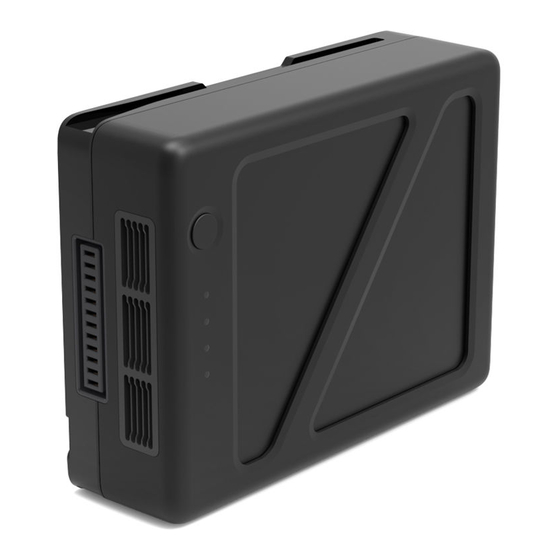dji TB50 Manual de mantenimiento - Página 10
Navegue en línea o descargue pdf Manual de mantenimiento para Accesorios para cámaras dji TB50. dji TB50 11 páginas. For m200 series drones
También para dji TB50: Usuario Manualline (3 páginas)

Battery Issues
Signs to Look For
Batteries should be taken out of service and replaced under the following circumstances:
-
Visibly swollen, leaking, or damaged (cracks, dents, etc...).
-
Bent terminals (could cause a short circuit)
-
There is an in-app notification/prompt regarding battery cell damage or over-discharge
-
200 cycles
-
Battery error still exists after performing the standard charge and discharge operations
twice continuously.
-
Crash or hard impact.
Communicating with DJI
Reach out to our support team at
within warranty (6 months and under 200 cycles) our team will provide instructions for
replacement.
Battery Disposal
Step 1. Place the battery into the aircraft or use the battery to charge a mobile device via a
Battery to Power Bank Adapter, discharging the battery until the battery turns off.
Step 2. Immerse the battery in saltwater with a concentration of 5% (for example, the mixture of
50 grams of salt and 1 kilogram of water) for 8 to 12 hours, to fully discharge the battery. Then
the battery can be regarded as safe. S altwater must be used to immerse the battery. With
tap water, the battery cannot be fully discharged and such operation may even cause a
potential safety hazard.
Note: If the battery is too swollen to be installed into the aircraft to be discharged, or it just
cannot be turned on, please directly immerse the battery into saltwater with a concentration of
5% or so for 24 to 48 hours to get it fully discharged.
Step 3. After the battery is fully discharged, please dispose of the battery in accordance with
local regulations regarding battery recycling and disposal in your area. DJI will take no
responsibility for any accidents or issues caused by customers continuing to use a swollen
battery.
with any battery issues. If your battery is
